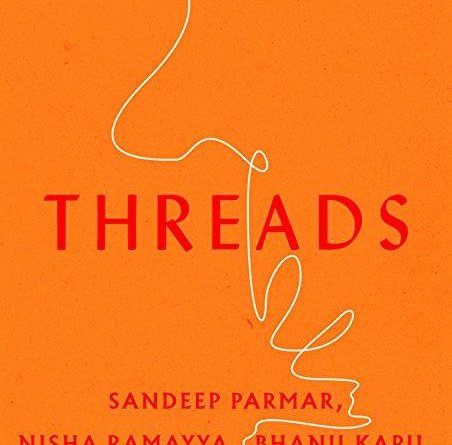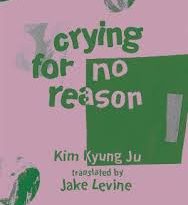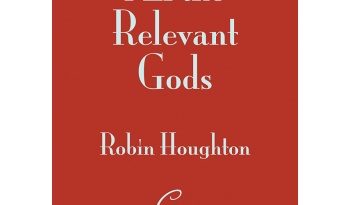Threads by Sandeep Parmar, Nisha Ramayya & Bhanu Kapil
– Reviewed by Becky Varley–Winter –
In Threads – a collaborative pamphlet on poetry and race from Sandeep Parmar, Bhanu Kapil and Nisha Ramayya – Parmar argues that the history of English lyric poetry is that of an exclusive and excluding club, shaped by colonial violence:
Its border guards are the literary gatekeepers of shared assumptions about experience, language and tradition.
When Parmar returned to England, the country of her birth, she grew aware of this “sovereignty” of English lyric as a “dominant poetic mode”, which “spoke from within a kind of integrated knowingness and belonging.” Confronting this way of writing, she felt herself become “an embodied other, an artefact vitrined alongside those with whom I shared a passing resemblance or some common history”.
The simplest definition of lyric poetry is that a lyric is a short poem, expressing emotion, using a first-person ‘I’, set in what Parmar calls an “epiphanic present” (as opposed to ‘dramatic’ or ‘epic’ poems, which might speak through various characters, or inhabit a longer, slower narrative time). In practice, this definition doesn’t completely hold true: ‘lyric’, ‘dramatic’ and ‘epic’ modes of poetry can and often do overlap (Samuel Beckett’s ‘Not–I‘, for example, could be heard as both dramatic and lyric, centred on a lone voice), and the seemingly straightforward definition of a ‘short personal poem’ doesn’t match the range of texts that ‘lyric’ is used to describe. Lyric poems were originally sung to the lyre, and retain some association with music and song. Regardless of its parameters, critics have argued that lyric, at least as it is traditionally imagined, is too dominant within contemporary poetry. Mark Jeffreys describes the situation of poetry as a “lyric ghetto”, as if poetry itself became a marginalised community after the novel (and, later, film and television) took over as primary narrative forms (Natasha Saje discusses this in Windows and Doors, p. 176).
Threads both critiques and challenges this narrowness, alternating and conversing between three voices. It may well constitute a ‘lyric essay’, like Claudia Rankine’s Citizen: An American Lyric, which narrates through a you which places the reader into the speaker’s position, rather than a more conventional lyric ‘I’ which speaks without pulling the reader inside its own voice. Sophie Collins’ Small White Monkeys, which interrogates feelings of shame in response to sexual violence, could also be described as a lyric essay – these texts are predominantly written in prose, but focus on the politics of personal emotions and experiences, particularly those that are felt to be taboo or dangerous to express. Threads is comparable to these works, both formally and politically. Formally, it moves between poetry and prose; politically, this generic indeterminacy mirrors its concern with the shifting borders of national identity and personal identity, particularly in the feeling of living between several cultures, never quite being able to go invisible or unnoticed. Ramayya describes feeling a certain solidarity with other people of colour, moving to sit together in predominantly-white rooms, without feeling that they necessarily have anything else in common.
Parmar’s ‘Lyric Violence, The Nomadic Subject and the Fourth Space’, written in dialogue with Bhanu Kapil, is a vital criticism of the reading of lyric poems as contextless, ‘universal’ utterances, outside of history. ‘Universal’ status, Parmar argues, has historically been applied to writing by white men, while writing by women and people of colour was marked ‘other’, demanding context for full understanding. “To my mind,” Parmar writes:
it is impossible to consider the lyric without fully interrogating its inherent promise of universality, its coded whiteness.
I wish there were some key examples at this point, if only to make the argument more vivid: which lyric poems particularly prompted this realisation? Presumably, all of them – that’s the point – and perhaps a sea of whiteness doesn’t demand anything more specific, being assumed the default, barely needing to be pointed out.
Nisha Ramayya, in her essay ‘Threads’, suggests that Parmar’s own reading of Homer’s epic Odyssey at various points during her essay might be one “marker of class and classicism”:
Perhaps reading the Odyssey is a way into assimilation, to certain white places, to certain European cultures; perhaps after solving the riddle and performing the feat, the person of colour is permitted to make her way out.
These problems of representation and inclusion are starkly visible in university syllabi, and Threads often seems to take aim squarely at academics, who must define, willingly or not, a literary ‘canon’ based on what they teach their students. The scope of what many students encounter is at best, limited. “Do you have knowledge of Sanskrit or Arabic? Do you have knowledge of the history of British India, of present-day India, Pakistan, and Bangladesh? Have you formed an estimate of their value?” Ramayya writes. She proposes a “tantric poetics” of weaving and reciprocity, which the poems in this pamphlet, by Sandeep Parmar and Bhanu Kapil, correspond to. Their poems relate to the partition of India and Pakistan, and the violence and displacement of this experience; they address family history, cultural memory, and what Kapil describes as the “ghosts and monsters of our stories”.
These histories are always seen double: rather than being entirely familiar, they are ghostly and haunting and monster-like even to Kapil’s speaker (‘monster’ means to show, the monstrous being that which is conspicuous within its surroundings, and thus only safe if kept hidden). Kapil compares memory to a well in the middle of writing, which remains dark even though certain things can be drawn up from it. She writes from a “fourth space” characterised by border-crossing and migration, and by an internal knowledge that her speaker, her “I”, can’t quite take safety for granted. In her sequence titled ‘Avert the Icy Feeling’, she describes visiting the house of a comfortably well-off white American poet:
I like the poet, she’s super nice, but I can’t cope with the unbroken trust – in poetry, in the economics of a household, in family life – that circulates through every part of what she is telling me.
She does not feel safe. She puts her head down on the table and weeps. This feeling of precarity and broken trust is partly to do with race; it is also to do with money, and with the increased fear and risk of writing without inherited wealth. Threads should be read by anyone teaching lyric poetry, but it would be a shame if only academics read it, as the questions it advances relate to the daily writing of poetry too, and to the situation of Britain now (Ramayya writes: “Diversify the Curriculum. Shut Down Detention Centres. Decolonisation Now. Freedom Now”). To me, the three voices in this pamphlet make a compelling case for a kind of lyricism that is not authoritarian, but questioning; the lyric voice as a thread woven among many others. I’m tempted to say that lyric poems have never been universal utterances – that whatever we mean by ‘universal’ and ‘transcendent’ meaning, it is a mirage created by the dominant culture – that poems communicate through fiercely living particulars – but that would be exactly the kind of universal conclusion that I am trying to avoid.




